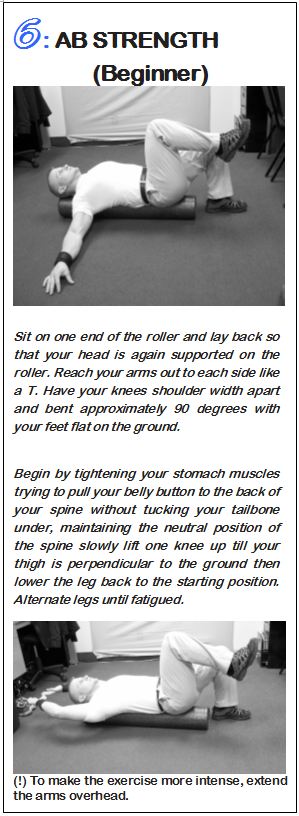THE ORIGINS OF
STRENGTH TRAINING
Getting stronger is simple… Pick up something heavy, don't hurt yourself,
and after resting repeat with something heavier. This simple idea is how athletes have been
building their strength for ages. It's
called "Progressive Loading".
Progressive loading's roots begin with the story of Milo. In the ancient Greek myth a boy named Milo
carried his pet calf to town each day. Each day the calf grew larger and Milo
continued carrying it until he was hefting a full-size bull to town each
day. While it is not recommended using a
cow as a strength training device, the idea remains the same… Start with a
weight that is manageable yet challenging and each workout gradually increase
the weight.
Over the years many institutions have tested out
several methods of training. By knowing
an estimated 1-repetition max of a trainee and knowing their goals a
progressive plan can be designed. As a
general rule , to keep progressing with a resistance exercise each workout add
an incremental amount of weight (2 ½ to 5 lbs).
STRENGTH vs. SIZE
For most people it comes down to either wanting to
increase their Muscle Strength or their Muscle Size. For those who want to maximize strength
(Powerlifters and Strongmen), it has been proven that training with more weight
vs. less reps works best. For those
focused solely on muscle size (Fitness Models and Bodybuilders) it is better to train with more repetitions at a weight that is still
challenging.
For Joe and Jane Fitness who are usually
just wanting to "tone up", training somewhere in the middle is best. There is less risk of injury and overtraining
while still building strength and muscle definition (though not as quickly as those training in the
extremities). When a person is just starting out, sets of
8-to-12 repetitions are recommended (usually 1-3 sets total).
FORM & FUNCTION
Proper form is as important as the weight a person
lifts. If a lift is executed wrong,
shearing forces in the joints and on tissues can cause serious damage.
A good example of this is with the Squat. Most novices let their knees bow in too much,
which puts excessive force on the ligaments and meniscus, which can tear
both.
An experienced lifting coach is a tool for success
with resistance training. Compound lifts
such as the Squat, Dead Lift, or Bench Press are complex movements and without
an experienced coach to make sure the lifter is performing them properly
mistakes can—and will—be made. Those
mistakes are hard to spot while the person is in the middle of a lift and can
result in injury once the resistance is increased. Try to find an experience coach at your gym
when starting out to mentor you.
THE BIG THREE LIFTS
There are three important lifts for anyone to learn;
the Squat, the Dead Lift, and the Bench Press.
These three lift provide the core to any good weight lifting
routine.
Knowing the proper form for each of the three big
lifts is essential for success. If the
form is off even by a small fraction with little weight, the malfunction will
be exaggerated at heavier weights.
If you cannot do the exercise with perfect form, then
you cannot do it at that weight. Bad
form will result in injury.
The following section details the Three Big Lifts,
accessory exercises, and making a routine.
. THE BARBELL SQUAT .
Known as the King of Lifts, the Squat when performed
correctly requires great leg and core strength.
The exercise sounds easy; however, most people do not
have the flexibility, core strength, or balance required to do weighted
squats. It is recommended that a person
master a body weight squat before attempting a weighted squat.
THE BARBELL SQUAT is performed by stepping into the rack and position the bar at back of
shoulders, just below the bottom of the neck (on the Trapezius, avoiding any
bony structures), grasping the bar on the sides. When gripping the bar, have the thumbs on the
outside of the bar, this will reduce the chance of the bar "rolling"
and injuring the wrists.
Pushing elbows up maintains bar stability and comfort.
Making sure to keep the chest up, dismount from the rack and position heels
shoulder width apart, facing 45 degrees out.
As you descend, push your knees out in line with
your toes and allow your hips to bend out while keeping your chest and
elbows up. Descend to full range of motion and then push up through your heels,
driving through your hips and keeping your chest up.
Remember, the bar will be traveling with your body in
a virtually straight "up and down" line. If you feel the bar pulling you forward or
backward during the lift, reset with a lighter weight and practice your form.
If you find yourself doing any of the following, focus
on your form extensively.
-not
reaching at least parallel with your hips.
-knees
bowing in or out.
-weight
shifting to the balls of your toes.
-pain
in the knees or ankles.
-looking
down at feet while squatting.
-losing
balance.
-not
able to "sit" in bottom position.
THE BARBELL BENCH PRESS
"What's your Bench?" is one of the first questions any decently muscled guy
gets asked about weightlifting.
The Bench Press is an effective exercise for building
the chest, shoulders, and arms.
Maintaining proper form is essential as overloading the shoulder can
result in serious injury.
THE BARBELL BENCH PRESS is performed laying flat on a bench. Your chest should be pushed slightly out and
shoulders square. Maintain a natural back arch (a hand should be able to
slip between the arch and the bench).
Grip the Barbell around shoulder width.
Dismount the barbell from the rack with an overhand
grip. Bring the barbell down to your middle chest, then press up until your
arms are fully extended over the shoulders.
Do not lock your elbows.
The forearms should always remain in line under the
bar. If the forearm becomes out of
alignment, the weight will be unevenly distributed and carry the weight towards
the head or the waist.
Arms and chest aside, the back and feet are just as
important in the lift.
The back and feet act as a giant stabilizer during the
lift. A weak back will limit the
lifter's ability to maintain control of the weight. The Feet should remain firmly against the
ground throughout the lift to maintain balance.
THE BARBELL DEADLIFT
You pick it up and put it down… It's that simple.
Unfortunately, most people don't know how to lift things
off the ground properly to begin with; pulling straight-legged with the back
arched twisting and jerking. Herniated
disks and pulled muscles await those who try to go heavy and not learn proper
form.
THE BARBELL DEADLIFT starts with positioning yourself over the middle of the bar with feet
shoulder width apart. Make sure the bar is parallel to the middle of your feet,
close to your ankles.
Bend down and grab the bar with an Overhand or
alternating grip, slightly bend your knees bringing your shins forward till
they touch the bar and look straight.
Keep your chest up so that you maintain a straight
posture with your back. Lift the bar by extending the hips pulling the chest
up, keeping it in contact with your shins on the way up and making sure to
retain that straight posture.
Lock out at the top of the movement and put the bar
back down keeping it close to your shins.
For beginners, the Deadlift can be uncomfortable as
the bar scrapes up the legs. If this
becomes a problem, wear long socks or pants to guard the shins.
ACCESSORY LIFTS
While
virtually every muscle is taxed using the Squat, Deadlift, and Bench Press it
is still good to round out a routine with accessory lifts.
While
you cannot spot reduce fat, you can enhance specific muscle groups through
isolation exercises. If you focus on a
lot of curls and triceps extensions, your arms will get bigger. The key is to look in the mirror, figure out
what you want to enhance, and work on it.
WRITING THINGS DOWN
The
key to progress is to know where you have been.
Keep
track of each workout; every rep counts.
Every time you come in to the gym, look at what you did the workout
before, add some more weight to what you did before (2 ½ lbs to 10 lbs), and lift.
These
exercises are the basics of weight lifting.
A personal trainer can help you decide if other exercises will benefit
you and how to get the most out of your workouts.
DISCLAIMER:
These exercises are intended for healthy adults. Perform these exercises at your own
risk. Consult your trainer, physical
therapist, or doctor before starting a new exercise program.
©RICHARD
TARLETON 2012
**********
Sources:
Hatfield, Frederick C.; Fitness: The Complete Guide; I.S.S.A.; 2009













































